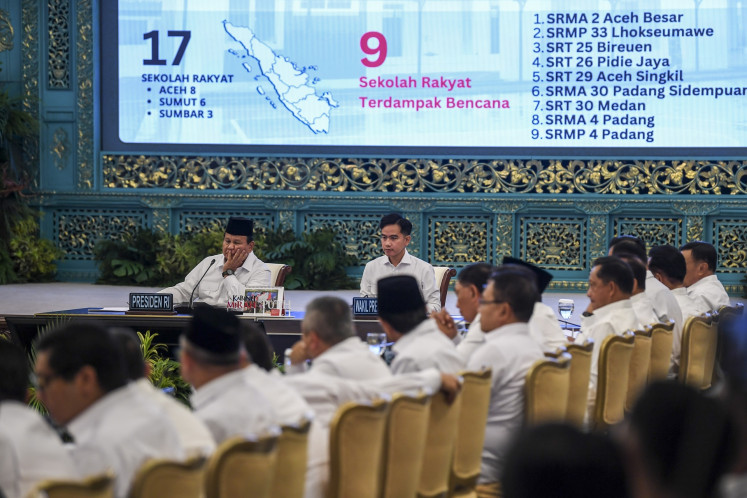Popular Reads
Top Results
Can't find what you're looking for?
View all search resultsPopular Reads
Top Results
Can't find what you're looking for?
View all search resultsAssessing merger of tourism, creative industries
The shift to reintegrate the management of the two fields when they were previously separated under two bodies in the previous Cabinet — namely the Tourism Ministry and the Creative Economy Agency (Bekraf) — raises questions about the possible outcomes of the reintegration.
Change text size
Gift Premium Articles
to Anyone
T
he decision to again place tourism and creative industries under a single ministry has sparked public debate. The government says that the merger into the Tourism and Creative Economy Ministry is necessarily because of the similarities between the two fields, particularly in that both sectors benefit from creativity.
However, its critics say that combining the two may inhibit the development of the creative industries, which contributed 7 percent to gross domestic product (GDP) in 2015, according to Statistics Indonesia (BPS). They say that merging the two fields under a single management source oversimplifies the complexities of the creative industries, which have 16 subsectors.
Indeed, since its rise to prominence in the 1990s, the creative industries have faced issues related not only to their definition and scope but also policy treatment in their development.
Hence, the shift to reintegrate the management of the two fields when they were previously separated under two bodies in the previous Cabinet — namely the Tourism Ministry and the Creative Economy Agency (Bekraf) — raises questions about the possible outcomes of the reintegration.
Organizing events that promote tourist destinations may be the most common example on how the creative industries can back tourism development. Carnivals, music concerts and film festivals are just a few promotional strategies for tourism to increase visitors and boost local economies.
This appears to be the logic behind the re-merging of the creative industries and tourism under one roof. The new tourism and creative economy minister, Wishnutama Kusubandio, stated that boosting tourism marketing was one of the aims of the reunion.
Organizing world-class events is among the ministry’s strategies to help increase foreign exchange and foreign tourist arrivals. The ministry also aims to increase tourism consumption. While these plans seem to signify the important role of creative industries like event organization, this view can be problematic, particularly regarding the development of the creative industries.


















